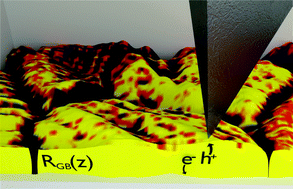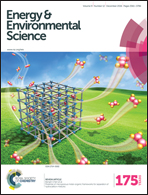Methylammonium lead iodide grain boundaries exhibit depth-dependent electrical properties†
Abstract
In this communication, the nanoscale through-film and lateral photo-response and conductivity of large-grained methylammonium lead iodide (MAPbI3) thin films are studied. In perovskite solar cells (PSC), these films result in efficiencies >17%. The grain boundaries (GBs) show high resistance at the top surface of the film, and act as an impediment to photocurrent collection. However, lower resistance pathways between grains exist below the top surface of the film, indicating that there exists a depth-dependent resistance of GBs (RGB(z)). Furthermore, lateral conductivity measurements indicate that RGB(z) exhibits GB-to-GB heterogeneity. These results indicate that increased photocurrent collection along GBs is not a prerequisite for high-efficiency PSCs. Rather, better control of depth-dependent GB electrical properties, and an improvement in the homogeneity of the GB-to-GB electrical properties, must be managed to enable further improvements in PSC efficiency. Finally, these results refute the implicit assumption seen in the literature that the electrical properties of GBs, as measured at the top surface of the perovskite film, necessarily reflect the electrical properties of GBs within the thickness of the film.


 Please wait while we load your content...
Please wait while we load your content...